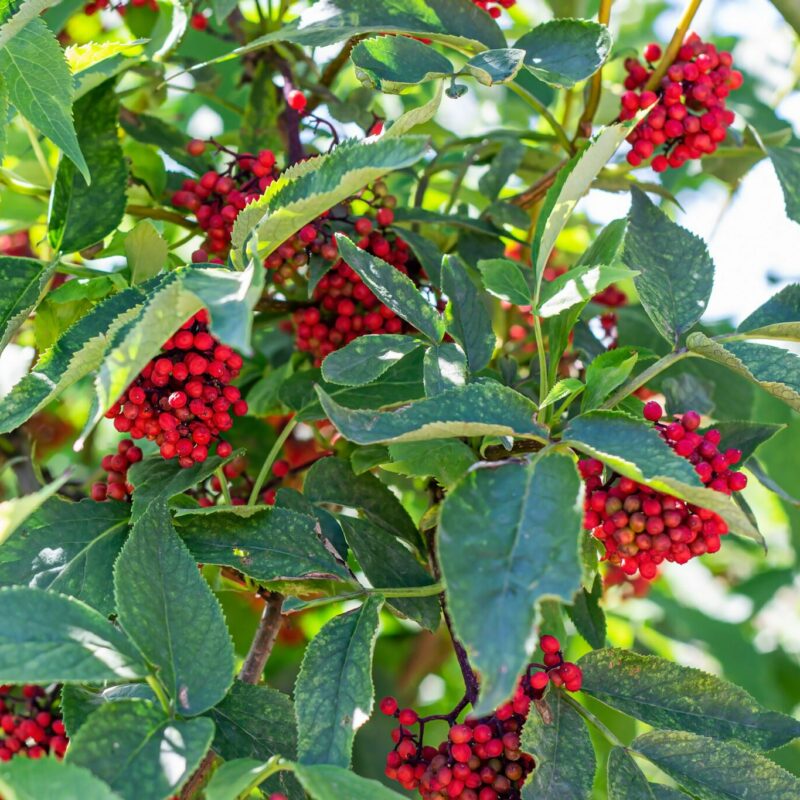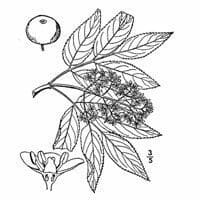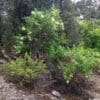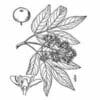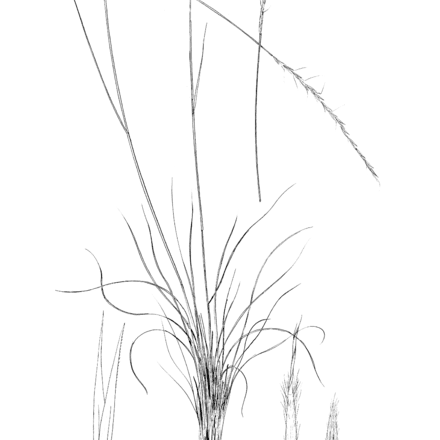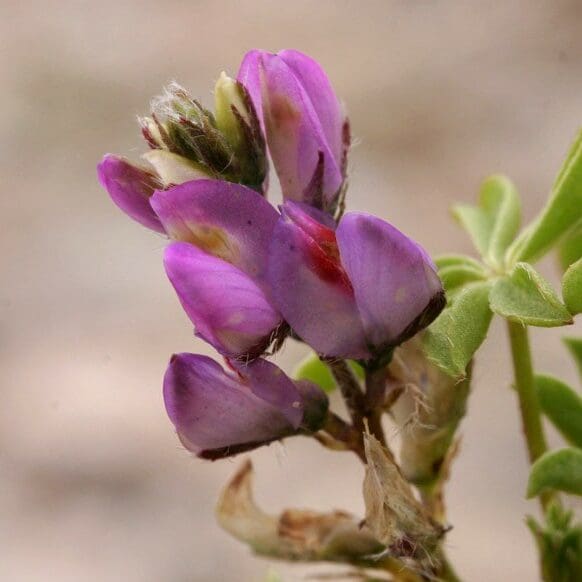Red Elderberry
- Scientific name: Sambucus racemosa
- Thrives in Riparian Zones
- Blue Elderberry is more drought tolerant
- Found on a wide variety of soils
- Dense roots and rhizomes
- Useful for soil stabilization and erosion control
5 in stock
Red Elderberry (Sambucus racemosa) thrives in Riparian Zones, on north aspects and transition zones. It is a large deciduous shrub or small tree of the Honeysuckle family that grows 10-20 ft tall with a broad arching form. In the Great Basin province it generally occurs at higher elevations (up to 9,500′) than Blue Elderberry. It can, however, inhabits streambanks, ravines, swamps, moist forest clearings and higher ground near wetlands from sea level to 9500 ft in elevation. It is shade tolerant but prefers a sunny exposure. It is found on a wide variety of soils but favors deeper, loamy sands and silts and nutrient rich sites with good drainage, ample moisture and a pH of 5.0 to 8.0. It is widespread throughout its range and is occasionally dominant or co-dominant in moist areas.
The dense roots and rhizomes of red elderberry, Sambucus racemosa make it useful for soil stabilization and erosion control on moist sites including streambanks. It provides fair to good food and cover for birds plus small and large mammals. Hummingbirds collect nectar from the flowers. The fruit is high in ascorbic acid. Stems, bark, leaves and roots contain cyanide-producing toxins but berries may be consumed as jelly or wine after cooking. This versatile plant can also be used to make dye, insecticide, medicine, and musical instruments. The colorful fruit attracts birds and several cultivars have been developed for ornamental applications.
***Click on the “Quick Plant Facts” tab above for more information.
Red Elderberry NRCS Plant Fact Sheet
Red Elderberry NRCS Plant Fact Sheet
PDF version of NRCS Plant Guide & Fact Sheet
Prepared By:Pete Gonzalves and Dale Darris. USDA NRCS Plant Materials Center, Corvallis, Oregon.
Species Coordinator: Pete Gonzalves. USDA NRCS
Plant Materials Center, Corvallis, Oreg
Helpful Links
Additional information about this product can be found on the academic websites linked below.
Synonyms
Many plants have more than one common and scientific name. We've listed a few of them below.
- Red Elderberry
- Sambucus racemosa
Who is Great Basin Seed?
Great Basin Seed is a seed company that specializes in seed sales and consultation for home, ranch, farm, range and reclamation. We have been a leader in the seed industry since 1974.
Our History
We've been in the seed business since 1974.
What We Offer
We offer seed for home, farm, ranch, range and reclamation projects.
Meet the Gang
We have the best employees in the world! We are proud of the work they do, and trust them to serve you!
Right: Company founder Lloyd and his wife Paula Stevens in a wildflower seed production field circa 1977
Quick Plant Facts
| Common Name: | Scarlet Elder, Stinking Elderberry |
|---|---|
| Scientific Name: | |
| Lifespan: | |
| Origin: | |
| Plant Type: | |
| pH Tolerance: | |
| Seeds per Pound: | |
| Growth Height: | |
| Min. Precipitation | 18 Inches Minimum |
| Best Time to Sow: | |
| Max Sowing Depth: | |
| Growth Season: | |
| Sun & Shade Tolerance: | Part Shade, Full Sun |
| Elevation of Occurance: | |
| Zone Map | comingsoon.gif |
| Hardiness Zones: |
